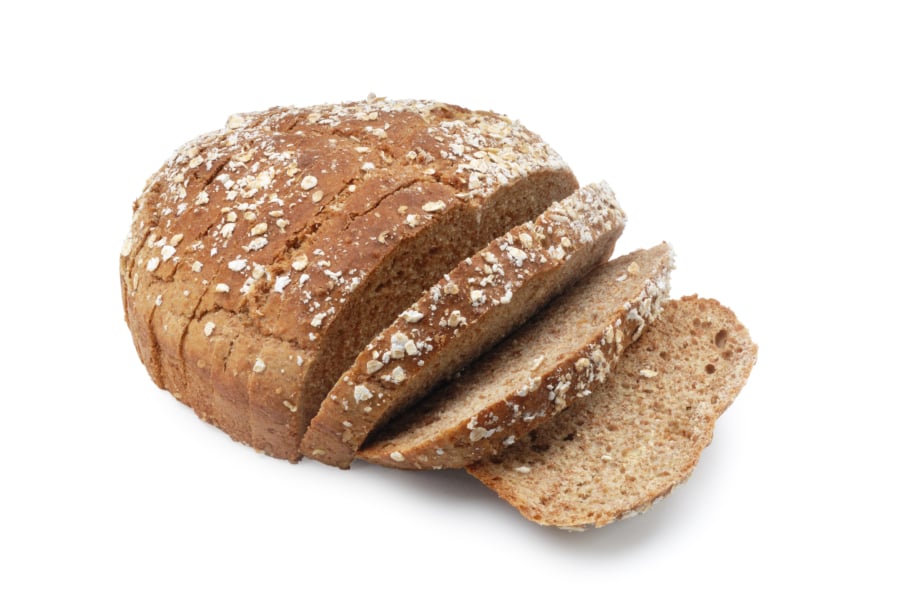Ah, bread. Whether they love it or hate it, everyone seems to have an opinion about it. There are whole diets built around avoiding carbs and gluten in bread — sometimes by choice, sometimes by medical necessity.
Science and technology may be coming to the rescue. Researchers and food companies around the world are trying to develop bread without side effects or with health-enhancing components, using newly developed enzymes, novel ingredients and gene editing.
Up to 45 million Americans have irritable bowel syndrome, which causes symptoms such as abdominal pain, gas and diarrhea. Researchers believe that one of the culprits of IBS is food high in FODMAPs (which are poorly absorbed fermentable carbohydrates). Wheat is a well-known FODMAP. It contains carbs called fructans, which some people with IBS have trouble digesting.
Finnish company Fazer Mills recently introduced an enzyme called LOFO, which can help lower the fructan content in wheat bread. That means bakers could produce low FODMAP bread for people with IBS. Researchers have found that a diet low in FODMAPs can help improve symptoms in about 70 percent of people with IBS.
The secret ingredient is fructanase, an enzyme that helps the body break down fructans into smaller units, which may be gentler on the stomach. According to company reports, this enzyme decreases fructans by 50 percent and does not change the taste or texture of the bread. For some people with IBS, reducing fructans by half will give relief. Others may need to avoid fructans entirely, so this bread may not help.
When used in breadmaking, gluten is responsible for the elasticity that gives bread its unique texture. It’s also the protein that triggers an immune response for the 3 million Americans with celiac disease, and it can cause unpleasant symptoms for those with gluten sensitivity.
Gene modification
Researchers across the globe are hoping to develop wheat that’s lower in gluten for those who are mildly intolerant, or to change the DNA of wheat so gluten is not a problem for people with celiac disease.
Dan Voytas, a professor in the Genetics, Cell Biology and Development Department at the University of Minnesota, is part of a team that developed a reduced-gluten wheat using gene-editing technology. Not to be confused with genetic modification, gene editing doesn’t add any foreign genes into the mix. Instead, it deletes or splices in part of an organism’s own genome.
Voytas’ lab has created a prototype for reduced-gluten wheat.
“This type of wheat is meant for people with gluten sensitivity, or those who want to reduce gluten in their diet,” Voytas says. “I believe we will eventually be able to make wheat without proteins that elicit the immune response in people with celiac disease, and they will one day be able to consume this product, too. I think we’re looking at a five-year timeline.”
So, how does it work? Using gene-editing technology called CRISPR/Cas9, researchers modify the celiac-causing gluten gene.
While some scientists are actively working on reducing or eliminating components in bread (such as fructans and gluten), others are asking “what can we add to bread to make it healthier?”
This is a common question in the community of people with type 2 diabetes, where bread has taken a huge hit because it’s high in carbs, which raise blood sugar levels.
Some people with type 2 diabetes opt for low-carb diets, which work well for many. But giving up carbs isn’t always realistic, and people who still want to eat bread are looking for a better option.
Because there’s only so much fiber that you can get from whole grain wheat, manufacturers are getting creative. European bakers are experimenting with tritordeum flour, which is a newly developed hybrid of wheat and wild barley. Its manufacturer says it yields 30 percent more fiber than traditional wheat flour, so the same piece of bread would have enhanced health benefits.
Other bakers are adding fiber by blending traditional wheat flour with lupin bean or lentil flour. Studies show that eating lupin-enriched bread instead of regular wheat bread can help reduce the risk for type 2 diabetes and heart disease. Adding lupin to an otherwise carb-rich meal can reduce blood sugar levels in people with type 2 diabetes. And it may play a role in overall blood sugar management.



